Urgent Dental Care: What Qualifies As A Dental Emergency?
Nothing can match the discomfort of suddenly realising that your mouth is not doing what it should be doing. Realisation of dental emergencies is important so that one knows how to care for the mouth and, most importantly, prevent very serious future problems. Typical sort of dental emergency that come along out of the blue: horrible toothache; fracture; abscess-they will just about wreck your everyday activities, and if you’d not taken those measures- they’ll leave permanent damage.
A report by Cityhub published in Oct 2024 says, that in 2022–23, nearly 87,400 emergency hospitalisations for dental conditions were reported in Australia. Dentists said that these emergencies could have been prevented with earlier intervention.
Saving overall health as well as smiling could mean knowing what especially dental emergency symptoms and when to seek help immediately, and taking prompt action to alleviate pain, prevent infection spread, and restore function.

What Is A Dental Emergency
Dental Emergency Definition: Acute conditions affecting teeth, gums, or other oral structures that require immediate medical care to avoid or minimize damage, prevent infection, or relieve agonizing pain.
Immediate Symptoms Requiring Urgent Care:
- Severe Toothache: For sharp chronic toothache pain that is unrelieved by the application of over-the-counter medications, the cause may be related to debris, infection, or nerve damage.
- Bleeding gums- As a rule, although common during any type of trauma or during normal activities like brushing, unconquerable bleeding may signal gum disease or become an injury.
- Swelling: This is the time and scene that require immediate attention. Suffering severe swelling of the jaw, face, gums, or abscess may occur or further develop infection.
- Knocked-out Tooth: One would have a great chance of saving one’s knocked-out tooth in less than an hour if that person would have gone to the dentist.
- Cracked or fractured tooth: This may mean great pain and infection, as every crack opens up the pulp. Loose teeth are held against falling either because of trauma or gum disease.
- Abscesses or Infections: These are generally indicated by pus, bad taste, or difficulty swallowing.
- Jaw pain or injury: Sudden and major pain, swelling, or inability to open the jaw would point to a fracture or dislocation.
Emergency dental care in Cranbourne North offers critical dental care in a timely and perfect fashion to minimize the hassles in getting such emergency dental care.
Signs That You Need Emergency Dental Care
Following are the signs of dental emergency:
- Extreme pain: Severe, extreme, unrelenting tooth pain that does not resolve with over-the-counter pain relief could indicate the presence of an infection, an abscess, or nerve damage.
- Swelling in the face or mouth: Unusual edema of the jaws, cheeks, or gums. this usually is a sign of an abscess or infection that needs urgent attention.
- Uncontrolled Bleeding: Prolonged bleeding from the mouth, tongue, or gums following dental operations or injuries. maybe a sign of trauma, gum disease, or a serious oral illness.
Emergency dental care symptoms help you greatly prevent your teeth in emergencies.
Top 5 Types Of Dental Emergencies
Various types of dental emergencies are:
- Extreme Toothache
A severe toothache usually results from deep decay, infection, or gum disease, with symptoms such as swelling, heat and cold sensitivity, and acute or throbbing pain.
Action to take:
- Rinse your mouth with warm salt water and use a cold compress to ease swelling.
- Slightly floss to get rid of debris.
- Don’t apply aspirin directly to your gums.
- Seek dental care right now.
- Teeth Chipped or Cracked
By exposing nerves or generating sensitivity, a chipped or cracked tooth can be caused by trauma or biting hard things. A chipped tooth emergency can be dealt with with the following actions.
Action to take:
- Use warm water to rinse your mouth, save any broken teeth, and use a cold compress to reduce swelling.
- See a dentist right away and, if dental wax is available, apply it to sharp edges.
- Knocked-out teeth
To salvage a knocked-out tooth, prompt dental care is essential.
What to do:
- Try to push the tooth back into its position without touching the root; handle it by the crown and gently clean it.
- Visit a dentist right away and, if at all possible, keep it in saliva or milk.
- Reimplantation success depends on timing.
- Soft tissue injury
There may be bleeding and pain from injuries to the tongue, lips, cheeks, or gums.
What to do:
- Rinse your mouth with salt water, apply a cold compress to reduce swelling, and press gently with a clean cloth to stop the bleeding.
- If bleeding does not stop, go to the dentist or the emergency room
- Dental abscess
This type of infection close to the root of a tooth gum line or dental abscess is usually accompanied by fever, swelling, and discharge of pus.
Action:
- Avoid the use of heat, rinse with salt water, and take over-the-counter painkillers.
- See a dentist immediately for tooth abscess treatment to arrest further worsening of the infection. In some cases, tooth extraction may be necessary to prevent the spread of infection and relieve pain.
A speedier recovery can be ensured and complications can be avoided with prompt action.
What To Do In A Dental Emergency
In an emergency involving the teeth, prompt action can stop additional harm. So how to handle a dental emergency? The following are dental emergency first aid procedures for typical crises:
- Knocked-Out Tooth:
- Gently rinse the tooth with water, being careful not to get any water on the root.
- Store it in milk or try putting it back in its socket.
- See a dentist right away.
- Broken or chipped tooth: In case of a chipped tooth or a Cracked Tooth Emergency
- Use a cold compress to lessen swelling and rinse your mouth with warm water.
- Keep any broken parts safe and get to the dentist right away.
- Toothache:
- Use a cold compress, rinse with warm salt water, and carefully floss to get rid of any debris.
- Do not apply aspirin straight to your gums.
- If the pain doesn’t go away, get dental care.
- Lost Crown or Filling: Make an appointment with a dentist and temporarily cover the area with sugarless gum or dental cement.
- Swelling or Abscess: To prevent problems, wash with warm salt water and visit a dentist as away.
Emergency Room Vs Dentist: Severe facial swelling, excessive bleeding, or damage affecting respiration are examples of life-threatening conditions that require emergency room treatments. See a dentist for tooth-specific problems such as discomfort, swelling, or a knocked-out tooth. The use of emergency dental tips followed by timely and efficient treatment can set your dental issues.
When To Visit The Emergency Room Vs. The Dentist
Making an informed decision about whether to see a dentist or the emergency department (ER) can guarantee appropriate care and save time. Acknowledging the severity is important in cases such as facial damage or chronic bleeding.
Visit the ER for;
- Severe facial trauma: If you have severe facial damage such as deep cuts, fractured jaws, or injuries that impair your breathing.
- Uncontrollable bleeding: Bleeding does not stop after ten to fifteen minutes even if pressure is applied.
- Breathing or vision problems because of edema: Severe swelling caused by infection or trauma may be lethal.
- Signs of a systemic infection: It includes chills, a high temperature, or excruciating pain that radiates outside the mouth.
Visit a dentist for;
- Dental injuries: These are characterized by broken, chipped, or dislodged teeth; and usually are not associated with bleeding greatly.
- Persistent toothaches: This is called an excruciating pain in the jaw and does not necessarily result from injury but requires immediate attention from a dentist.
- Gum diseases: Like painful or swollen infections, unless associated with bad breath, should be treated seriously.
Anything apart from these really would concern your general health like difficulty in breathing, escaping blood, or any injury that surely requires that one to visit an emergency clinic immediately. Most isolated tooth problems and mouth problems can assuredly be handled by your dentist. But for comfort, it would help to go and see a dental doctor when in doubt.
Preventing Dental Emergencies
The Preventive Steps Towards a Healthy Smile: Emergencies are always quite expensive; painful; and much more compounding, stressful events. They are the type of things that happen just when you did not expect them and even usually at a time when something bad wants to happen all these associated compounds, it is always preferred that such be avoided. Such dental emergency prevention tips will keep you away from experiencing such events altogether:
- Wear Mouthguard: Those individuals whose lifestyles include playing contact sports or other physically strenuous activities would consider that mouthguard custom-fitted to be the sure preventive measure against teeth from being chipped, cracked, or falling out.
- Regular Check-Ups with the Dentist: Make dental appointments for a clean and a check-up with the dentist every six months. This makes it possible to be early in finding gum diseases and cavities or some other oral problems and treating them before worsening through constant checking.
- Avoid Hard Foods: In chewing on hard things, nuts, and hard candies, cracking or chipping teeth is the likely result. A mere selection of foods must have a precaution.
- Good Oral Hygiene: Always use fluoride toothpaste. Brush at least twice a day, floss daily, and rinse with antimicrobial mouthwash.
- Avoid Using Your Teeth as Tools: Never use your teeth for opening some boxes or the places where there is a requirement of tools.
All these dental emergency prevention steps will protect your teeth, save you from trouble, and have a pain-free healthy smile for years to come.
Conclusion
A timely response is crucial in dental emergencies to protect your oral health and prevent consequences. If one ignores the dental problem, it might cause severe pain, infections, or even permanent damage. Immediate action ensures the best outcome; whether it is bleeding gums, a damaged tooth, or severe pain, getting professional help is essential and should be done as soon as possible.
Contact your trusted dental clinic immediately by searching “emergency dentist near me” if you or someone you care about is in a dental emergency. You can find experienced staff ready to provide timely, effective care when you need it the most. Now is the time to take charge of your oral health—get help right away!



